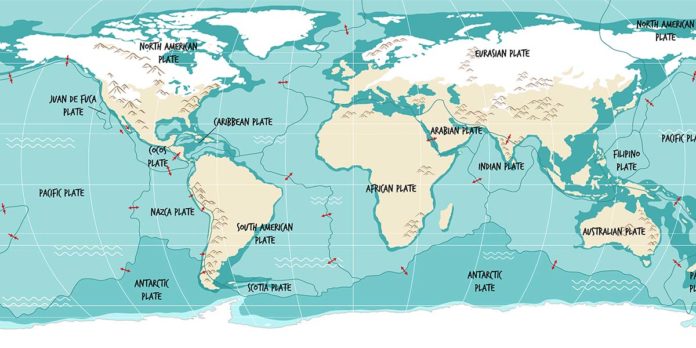Our planet is a dynamic and ever-changing place, with countless geological processes shaping its landscapes, oceans, and atmosphere over millions of years. One of the most important of these processes is plate tectonics, which describes how the Earth’s outer layer is broken into large, rigid plates that move and interact with each other.
Plate tectonics not only affects the planet’s physical features, but also has profound implications for human society, including natural hazards, resource distribution, and climate change.
Plate tectonics is based on the theory of continental drift, which was first proposed by German scientist Alfred Wegener in the early 20th century. Wegener noticed that the continents appeared to fit together like a jigsaw puzzle, and that there were similarities between the rocks, fossils, and mountain ranges on opposite sides of the Atlantic Ocean.
He hypothesized that the continents had once been joined together in a single supercontinent called Pangaea, and had then drifted apart to their current positions over millions of years.
While Wegener’s ideas were initially met with scepticism, subsequent research confirmed that the Earth’s crust is indeed broken into a series of large plates that move relative to each other. There are currently seven major plates and several smaller ones, with boundaries that can be either divergent, convergent, or transform.
Types of tectonic plates boundaries
Divergent boundaries occur where two plates are moving away from each other, typically at mid-ocean ridges. At these locations, new oceanic crust is created as magma rises to the surface and solidifies, pushing the existing crust apart. This process is known as seafloor spreading and results in the formation of a new oceanic crust, which is constantly recycled back into the mantle at subduction zones.
Convergent boundaries occur when two plates are moving towards each other, resulting in the formation of mountains, volcanic arcs, and oceanic trenches.
Transform boundaries occur when two plates are moving past each other, typically along large faults like the San Andreas Fault in California. At transform boundaries, there is no creation or destruction of crust, but instead, the plates slide horizontally past each other, often resulting in earthquakes.
So why do the plates move in the first place? The driving force behind plate tectonics is convection in the Earth’s mantle, which is the hot, viscous layer beneath the crust. As heat is transferred from the core to the surface, material in the mantle becomes less dense and rises, while cooler, denser material sinks back down. This convection creates a circular motion in the mantle, which drags the overlying plates along with it.
What does it mean for Earth?
The movement of the plates has numerous consequences for the Earth and its inhabitants. Perhaps the most obvious is the creation of geological features like mountains, volcanoes, and ocean basins. The Himalayas, for example, were formed as a result of the collision between the Indian and Eurasian plates, while the Hawaiian Islands were formed by volcanic activity at a hot spot in the middle of the Pacific Plate.












